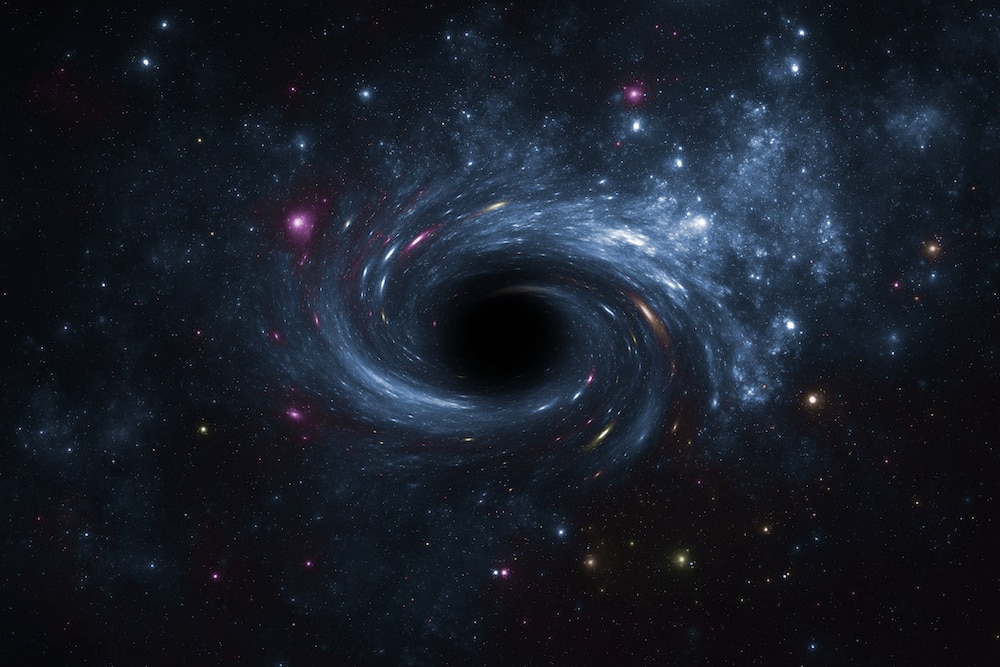Create a free profile to get unlimited access to exclusive videos, sweepstakes, and more!
Rare black hole might be what is left after one galaxy devoured another
Are an intermediate-mass black hole and its star cluster all that's left after a galaxy ate another galaxy?

Just when you thought black holes couldn’t get any more mysterious, they did.
Supermassive black holes are the behemoths that lurk in galactic centers, but what about those other beasts out there? The ones not really massive enough to be supermassive but still too huge to be lowly stellar mass black holes? There might be an intermediate-mass black hole (IMBH) hidden in star cluster B023-G078 in the Andromeda galaxy, or M31, and those stars could be the leftovers of a smaller galaxy that was eaten alive by Andromeda.
Astronomer Renuka Pechetti, who led a study now on the preprint server arXiv, thinks there could be an IMBH in B023-G078 because of how the stars in that cluster are behaving. It should be about 100,000 solar masses (which is nothing compared to the millions of solar masses supermassive black holes can reach). The problem with black holes — especially IMBHs — is that unless they are shoving star stuff into their faces, they elude us.
“Intermediate-mass black holes are hard to find,” Pechetti told SYFY WIRE. “With an IMBH, the sphere of influence, the area around the black hole where its effect is profound on surrounding stars, is pretty small, which makes it hard to detect high-velocity stars around them.”
How stars are moving around a suspected black hole could be the giveaway for an IMBH. It is possible that the object in question might not be an IMBH at all, but a population of smaller stellar-mass black holes (less than a hundred solar masses) in that globular cluster which exert enough gravitational force to have an effect on the velocity of the stars around them. As clusters like this evolve, stars eventually die and collapse in on themselves, morphing into black holes. This is why it becomes difficult to figure out what is causing the stars’ unusually high velocities.
Something that supported the idea of a black hole hanging out in the middle of B023-G078 was its metal content, which revealed an age of about 10.5 billion years for the cluster. Light emitted by the stars showed metal signatures that were barely there, but enough to reveal not only an age but a metallicity similar to that of other star clusters that were once the cores of dwarf galaxies. These unfortunate galaxies were swallowed by mega galaxies like Andromeda, which stripped away everything else. So B023-G078 is essentially a zombie galactic core.
“When the dwarf galaxy was close enough to Andromeda, it would have been consumed and left with its central cluster and IMBH,” said Pechetti. “This process is also called tidal stripping, and the leftover nucleus — which is B023-G078 in this case — is a tidally stripped nucleus.”
Pechetti and her research team then modeled B023-G078 from hi-res Hubble data that they compared to data from the GEMINI telescope. How much light the stars in the cluster were giving off gave them an idea of mass distribution, which helped them also predict how fast those stars were moving around the center of the cluster. The GEMINI telescope’s data on that speed aligned with what the model had predicted. For B023-G078 stars to be moving as fast as they were, the researchers found that there had to be a 100,000 solar mass IMBH in there.
Though they may never make as many headlines as supermassive black holes, IMBHs may shed light on how black holes first came into being at the birth of the universe and evolved from there. It is possible that an IMBH could be the result of many stellar-mass black holes merging, and maybe the reason behind the almost unfathomable size of supermassive black holes is the merging of IMBHs that created a monster. IMBHs may have never even needed a star to die. Pechetti also thinks they could have formed from ginormous gas clouds that collapsed.
“IMBH demographics are important for distinguishing between formation mechanisms such as merging and accretion, both of which drive black holes to grow,” she said. “The discovery of IMBHs shows that it is possible they acted as ‘seed’ black holes in the early universe.”


























